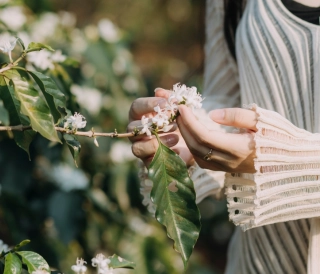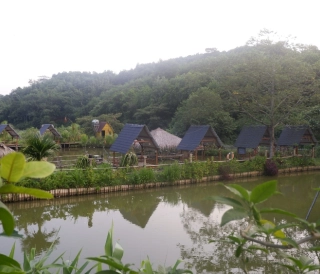Balneotherapy: The Natural Art of Water Healing
17-05-2025 19:16
Main contents
1. Introduction
Balneotherapy, the therapeutic use of natural mineral water, healing mud, or steam, has been practiced since ancient times and continues to play a vital role in modern medicine. Known for its benefits in treating musculoskeletal disorders, skin conditions, and improving mental well-being (Fioravanti et al., 2017), balneotherapy today goes beyond traditional hot spring resorts—it is increasingly integrated into at-home wellness practices and health tourism experiences.
This article offers a comprehensive overview of balneotherapy’s origins, its therapeutic mechanisms, clinical applications, and proven effectiveness. It also explores how balneotherapy is being embraced in both daily life and the growing wellness tourism industry in Vietnam, based on scientific studies and practical case examples.
Balneotherapy traces its roots to ancient civilizations, where Greeks, Romans, and Japanese communities used geothermal waters for healing and relaxation (Van Tubergen & Van der Linden, 2002). By the 18th century, European physicians like Hahn J.S. began formalizing its medical applications, laying the foundation for modern hydrotherapy (Routh et al., 1996). In the 19th century, famous spa towns like Baden-Baden (Germany) and Bath (England) became leading therapeutic destinations, drawing visitors from across Europe.
In Vietnam, hot springs such as Tháp Bà (Nha Trang) and Bình Châu (Bà Rịa–Vũng Tàu) have been utilized since the early 20th century and are now popular wellness retreats (Hoang Kiem, 2014), attracting both domestic and international travelers seeking natural healing experiences.

2. Application Methods
Balneotherapy can be incorporated into everyday life through various practical approaches, offering long-term health benefits when used properly. One of the most common methods is participating in treatment sessions at dedicated wellness centers or natural hot springs. Here, guests can enjoy therapeutic mineral baths or mud baths, typically lasting 15–20 minutes per session, with a recommended frequency of 2–3 times per week to achieve optimal results (Trong Co Truyen, 2021).
For those unable to visit spa destinations regularly, balneotherapy can also be practiced at home. This includes mineral salt baths using Epsom salts or bottled mineral water in a bathtub, maintaining a water temperature of 35–38°C. Adding a few drops of lavender essential oil can further enhance relaxation. Each session should also last about 15–20 minutes, offering a simple yet effective way to unwind and rejuvenate.
Another form of balneotherapy is drinking natural mineral water, which is believed to aid digestion and metabolic functions. However, this practice should follow medical guidance to ensure safety and effectiveness.
To fully optimize its health benefits, balneotherapy should be combined with a balanced lifestyle, including a healthy diet and regular physical activity. This holistic approach strengthens the therapeutic impact on both body and mind.
 Tắm khoáng mang lại sức khỏe
Tắm khoáng mang lại sức khỏe
3. Mechanisms of Action and Clinical Applications
Balneotherapy exerts its therapeutic effects through three primary mechanisms, forming the foundation for its diverse clinical applications and proven health benefits.
-
Thermal effects from warm water (35–38°C) stimulate blood circulation, reduce inflammation, and relax muscles—leading to pain relief and improved mobility (Fioravanti et al., 2017).
-
Chemical effects arise as minerals such as sulfur, salts, and radon penetrate the skin, enhancing metabolic processes and improving skin function. This is particularly beneficial in treating dermatological conditions like psoriasis and eczema (Sukenik et al., 1999).
-
Physical effects are produced by hydrostatic pressure and buoyancy, which reduce joint loading and support mobility in patients with musculoskeletal disorders (Gutenbrunner et al., 2010).
These combined mechanisms make balneotherapy a comprehensive natural therapy that supports holistic health.
In clinical practice, balneotherapy is widely used across various medical fields. In the treatment of musculoskeletal conditions, it aids in managing rheumatoid arthritis, osteoarthritis, and chronic back pain—helping to alleviate symptoms and improve joint function (Fioravanti et al., 2017). For skin disorders, mineral-rich water offers anti-inflammatory properties that are effective in managing psoriasis and atopic dermatitis (Sukenik et al., 1999).
Beyond physical health, balneotherapy contributes to mental well-being by reducing stress, anxiety, and improving sleep quality through the calming effect of warm water immersion (Hoang Kiem, 2014). It also plays a key role in rehabilitation therapy, helping patients recover mobility after injuries or surgeries, by utilizing the supportive and resistance properties of water (Gutenbrunner et al., 2010).
Common therapeutic formats include mineral baths, mud therapy, steam therapy, and therapeutic mineral water drinking, usually offered at natural hot springs or dedicated wellness resorts and spas.

4. Therapeutic Efficacy
The therapeutic efficacy of balneotherapy has been well-documented in numerous scientific studies. According to Fioravanti et al. (2017), balneotherapy significantly reduces pain and joint stiffness in patients with rheumatoid arthritis after just four weeks of treatment. Similarly, Sukenik et al. (1999) reported that sulfur-rich mineral water from the Dead Sea improved psoriasis symptoms in 80% of patients within 3–4 weeks. In Vietnam, combined treatments at Thap Ba Hot Springs (Nha Trang) with UVB therapy have shown comparable results (Trong Co Truyen, 2021). Additionally, balneotherapy has demonstrated neurological relaxation effects and improved sleep quality in patients with fibromyalgia (Hoang Kiem, 2014).
However, the effectiveness of balneotherapy depends on several factors, including the mineral composition, duration of treatment, and the patient’s overall health condition. One of the main limitations is the lack of large-scale controlled studies needed to standardize therapeutic protocols (Van Tubergen & Van der Linden, 2002).
When compared to other treatment methods, balneotherapy presents both notable similarities and differences in mechanisms, efficacy, accessibility, and potential side effects.
-
Compared to pharmacological treatment, balneotherapy offers a more holistic approach. While medications like NSAIDs or corticosteroids act through biochemical pathways to quickly reduce inflammation and pain, they rarely address psychological well-being or circulation. Balneotherapy, on the other hand, combines relaxation with circulatory and metabolic benefits (Fioravanti et al., 2017; Sukenik et al., 1999). Though drugs are more readily accessible via prescriptions, they require medical supervision and carry long-term risks, such as gastrointestinal, renal, or cardiovascular complications—unlike balneotherapy, which generally has minimal side effects.
-
In contrast to physical therapy, which uses exercise, manual therapy, or tools like ultrasound to enhance musculoskeletal function, balneotherapy stands out in treating dermatological conditions due to the chemical properties of mineral water (Gutenbrunner et al., 2010; Sukenik et al., 1999). Physical therapy often demands trained professionals and dedicated facilities, limiting home use. Balneotherapy, however, can be practiced at home using mineral salts. While both have low-risk profiles, excessive physical activity or overly hot mineral baths can cause discomfort.
-
Hydrotherapy without minerals, though similar in its use of water for thermal and physical effects, lacks the therapeutic minerals (e.g., sulfur or radon) that make balneotherapy more effective for skin conditions and metabolic support (Gutenbrunner et al., 2010; Sukenik et al., 1999). While non-mineral hydrotherapy is easier to implement at home, its overall benefits are more limited. Side effects for both are minimal and generally tied to water temperature or duration of immersion.
In summary, balneotherapy distinguishes itself through its unique combination of thermal, chemical, and physical effects. It offers a non-invasive, integrative therapy that can complement other treatments, especially for patients seeking natural, sustainable, and whole-body wellness solutions.

5. Conclusion
Balneotherapy represents an effective therapeutic approach that harmoniously blends ancient traditions with modern science. Through its unique combination of thermal, chemical, and physical mechanisms, this method has proven beneficial in treating musculoskeletal disorders, dermatological conditions, and enhancing psychological well-being. Its non-invasive nature and minimal side effects make it a compelling alternative or complement to conventional therapies.
In the context of Vietnam's tourism industry, balneotherapy not only contributes to individual health and wellness but also plays a vital role in promoting green tourism, preserving cultural heritage, and creating economic opportunities for local communities. It offers a promising pathway for sustainable development that aligns health benefits with cultural and ecological values.
Nonetheless, further controlled clinical research is essential to standardize treatment protocols and determine optimal dosages. Additionally, investments in infrastructure, staff training, and integrated service design are crucial to unlocking balneotherapy’s full potential within wellness and medical tourism.
On a personal level, balneotherapy is easy to incorporate into everyday life—whether through specialized wellness centers, home-based mineral baths, or integrated travel experiences. When combined with a balanced lifestyle, this natural therapy can contribute to long-term health, stress relief, and overall well-being.
References
Fioravanti, A., Cantarini, L., Guidelli, G. M., & Galeazzi, M. (2017). Mechanisms of action of spa therapies in rheumatic diseases: What scientific evidence is there? Journal of Rheumatology, 44(5), 623–629. https://doi.org/10.3899/jrheum.160846
Gutenbrunner, C., Bender, T., Cantista, P., & Karagülle, Z. (2010). A proposal for a worldwide definition of health resort medicine, balneology, medical hydrology, and climatology. International Journal of Biometeorology, 54(5), 495–507. https://doi.org/10.1007/s00484-010-0321-5
Hoang Kiem, H. (2014). Trị liệu bằng nước khoáng nóng, bùn khoáng, tắm hơi. Vật lý trị liệu và Phục hồi chức năng. Available at: https://hahoangkiem.com/vat-ly-tri-lieu/tri-lieu-bang-nuoc-khoang-nong-bun-khoang-tam-hoi-211.html (Accessed: 14 May 2025).
Routh, H. B., Bhowmik, S., Parish, J. L., & Witkowski, J. A. (1996). Balneology, mineral water, and spas in historical perspective. Clinics in Dermatology, 14(6), 551–554. https://doi.org/10.1016/0738-081X(96)00083-1
Sukenik, S., Abu-Shakra, M., & Flusser, D. (1999). Balneotherapy in autoimmune disease. Israel Medical Association Journal, 1(4), 263–267.
Trong Co Truyen. (2021). Giải mã tác dụng của tắm khoáng nóng đối với sức khỏe. Available at: https://trongcotruyen.vn/giai-ma-tac-dung-cua-tam-khoang-nong-doi-voi-suc-khoe.html (Accessed: 14 May 2025).
Van Tubergen, A., & Van der Linden, S. (2002). A brief history of spa therapy. Annals of the Rheumatic Diseases, 61(3), 273–275. https://doi.org/10.1136/ard.61.3.273
Seeking Climate Justice: Acknowledging Historical Truths
On World Environment Day, Professor Joyeeta Gupta (simulated) offers a powerful lens through which to examine the global climate crisis—one grounded in historical truths and justice. She argues that climate change is not merely a consequence of industrial development or population growth, but the product of a fundamentally unjust and unsustainable development model rooted in colonial legacies.
The Green Planet – Plants on Earth
Earth, our "green planet," is the home where life has developed and evolved over billions of years. Within Earth's complex ecosystems, plants play a central role, not only as a source of life for countless species but also as a crucial factor in maintaining planetary balance.
Khe Sanh in March – The Hills Where Coffee Flowers and Fruit Awaken Together
Khe Sanh – Where Nature and Daily Life Flow as One
When March arrives, Khe Sanh awakens in a dazzling display of blossoms and scent.
This land, quiet and humble for most of the year, bursts into color with the pure white bloom of coffee flowers and the vibrant red ripening of jackfruit coffee berries.
It’s not just a season—it’s a living canvas where nature and people breathe in harmony, painting the hills with fragrance, light, and life.
Retreat to Nature – Where Sustainability Meets Serenity
The term “retreat” originates from English, meaning to “withdraw” or “step away”—often from the noise and pressures of modern life.






